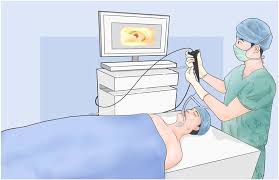 Electromagnetic navigation bronchoscopy (ENB) utilizes electromagnetic technology designed to localize and guide endoscopic tools or catheters through the bronchial pathways of the lung.
Electromagnetic navigation bronchoscopy (ENB) utilizes electromagnetic technology designed to localize and guide endoscopic tools or catheters through the bronchial pathways of the lung.
It uses a virtual, three-dimensional (3D) bronchial map from a recently computed tomography (CT) chest scan and disposable catheter set.
It enables navigation to a desired location within the lung to biopsy lesions, stage lymph nodes, insert markers to guide radiotherapy or guide brachytherapy catheters. uring navigational bronchoscopy, biopsy of pulmonary nodules is performed with the use of catheters that are guided through peripheral airways on the basis of CT images obtain before the procedure without involvement of the pleurae.
The ENB system consists of four essential components:
A disposable working channel, or sheath, that extends beyond the reach of the bronchoscope and becomes a pathway to the lesion for subsequent diagnosis and treatment.
A disposable guide catheter is capable of 360° steering.
Electromagnetic navigation bronchoscopy consists of two primary phases.
In the planning phase CT scans are utilized to mark and plan pathways to targets within the lung.
These pathways are displayed and can be utilized in the navigational phase to access deep within the lung.
CT scanning software reconstructs the patient’s airways in multiple 3D images, that mark target locations and plan pathways to these target locations within the lungs.
The navigation phase uses the data to navigate the steerable sensor probe and extended working channel to the desired target location(s).
ENB provides a yield/procedure rate at 74% and 100% for peripheral lesions and lymph nodes, respectively.
A diagnosis was obtained in 80.4% of bronchoscopic procedures.
Electromagnetic navigation bronchoscopy without additional fluoroscopic guidance is a safe and efficient technique for the diagnosis of peripheral pulmonary nodules.
The addition of ontraprocedural three dimensional imaging with digital tomosynthesis and cone beam CT integrated with navigational bronchoscopy platforms has improved diagnostic accuracy.
This method has been found cause pneumothorax in about 2% of cases.
The diagnostic accuracy of navigational bronchoscopy is non-inferior to that of transthoracic needle biopsy among patients with peripheral nodules measuring 10 to 30 mm.
